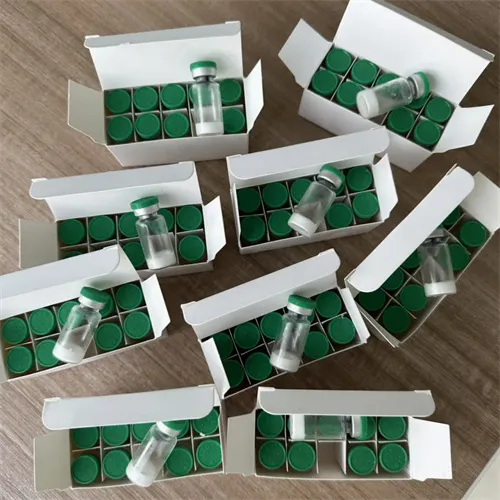Warning: Undefined array key "title" in /home/www/wwwroot/HTML/www.exportstart.com/wp-content/themes/1198/header.php on line 6
Warning: Undefined array key "file" in /home/www/wwwroot/HTML/www.exportstart.com/wp-content/themes/1198/header.php on line 7
Warning: Undefined array key "title" in /home/www/wwwroot/HTML/www.exportstart.com/wp-content/themes/1198/header.php on line 7
Warning: Undefined array key "title" in /home/www/wwwroot/HTML/www.exportstart.com/wp-content/themes/1198/header.php on line 7
- Afrikaans
- Albanian
- Amharic
- Arabic
- Armenian
- Azerbaijani
- Basque
- Belarusian
- Bengali
- Bosnian
- Bulgarian
- Catalan
- Cebuano
- China
- China (Taiwan)
- Corsican
- Croatian
- Czech
- Danish
- Dutch
- English
- Esperanto
- Estonian
- Finnish
- French
- Frisian
- Galician
- Georgian
- German
- Greek
- Gujarati
- Haitian Creole
- hausa
- hawaiian
- Hebrew
- Hindi
- Miao
- Hungarian
- Icelandic
- igbo
- Indonesian
- irish
- Italian
- Japanese
- Javanese
- Kannada
- kazakh
- Khmer
- Rwandese
- Korean
- Kurdish
- Kyrgyz
- Lao
- Latin
- Latvian
- Lithuanian
- Luxembourgish
- Macedonian
- Malgashi
- Malay
- Malayalam
- Maltese
- Maori
- Marathi
- Mongolian
- Myanmar
- Nepali
- Norwegian
- Norwegian
- Occitan
- Pashto
- Persian
- Polish
- Portuguese
- Punjabi
- Romanian
- Russian
- Samoan
- Scottish Gaelic
- Serbian
- Sesotho
- Shona
- Sindhi
- Sinhala
- Slovak
- Slovenian
- Somali
- Spanish
- Sundanese
- Swahili
- Swedish
- Tagalog
- Tajik
- Tamil
- Tatar
- Telugu
- Thai
- Turkish
- Turkmen
- Ukrainian
- Urdu
- Uighur
- Uzbek
- Vietnamese
- Welsh
- Bantu
- Yiddish
- Yoruba
- Zulu
Nov . 04, 2024 16:30 Back to list
Optimizing Xanthan Gum Proportions in Flour Blends for Enhanced Baking Performance
The Role of Xanthan Gum in Flour-Based Recipes Enhancing Texture and Performance
Xanthan gum, a versatile food additive derived from the fermentation process of the bacteria Xanthomonas campestris, has gained prominence in recent years, particularly in gluten-free baking. This polysaccharide not only acts as a thickening and stabilizing agent but also shows remarkable benefits when combined with various types of flour. Understanding the relationship between xanthan gum and flour can enhance the quality of baked goods, especially for those following gluten-free diets or seeking to improve the texture of traditional recipes.
The Importance of Texture in Baking
Texture plays a crucial role in the quality of baked products. The ideal texture can vary significantly depending on the type of product being baked. For instance, a good bread should have a chewy crust and soft, airy interior, while cookies ought to be crispy on the outside and tender on the inside. Achieving these characteristics often relies on the gluten structure in conventional flour, which provides elasticity and strength to the dough. However, for gluten-free flour, the absence of gluten poses a challenge. This is where xanthan gum comes into play.
Xanthan Gum as a Binding Agent
Xanthan gum acts as an excellent binding agent, helping to mimic the effects of gluten. When xanthan gum is added to gluten-free flours, it hydrates and forms a gel-like structure that can trap air bubbles during mixing and baking. This is crucial for creating that desired airy structure in baked goods. It adds viscosity to the batter or dough, contributing to better moisture retention, which is essential for avoiding dry and crumbly textures in gluten-free products.
In the case of traditional all-purpose flour, incorporating xanthan gum can improve moisture retention and extend shelf life, resulting in fresher baked goods. It helps achieve a more cohesive dough without the need for excessive kneading, which can lead to overworking the flour and developing undesired textures.
xanthan gum to flour

Recommended Ratios
When using xanthan gum, the ideal ratio varies depending on the type of flour and the baked good being prepared. For gluten-free flours, a common recommendation is to use about 1/2 to 1 teaspoon of xanthan gum per cup of flour. For baked goods like cookies, muffins, and pancakes, starting with a lower amount — around 1/2 teaspoon — is advisable, whereas for bread or pizza dough, up to 1 teaspoon per cup can provide the necessary strength and elasticity.
For those utilizing traditional flours, the addition of xanthan gum might be minimized due to the presence of gluten, though experimenting with amounts can enhance the final product’s texture. Furthermore, the specific flour blend plays a significant role; for example, using almond or coconut flour may require different amounts of xanthan gum to achieve the right consistency.
Practical Applications
When baking with xanthan gum, it’s important to consider the mixing method and hydration of the ingredients. It’s best to blend xanthan gum with the dry ingredients before adding liquids to ensure even distribution throughout the batter. Allowing the batter to rest for a few minutes can also enhance the gum's thickening properties, improving the overall texture of the final product.
In conclusion, xanthan gum serves as an invaluable ingredient in both gluten-free and traditional baking, enhancing the texture and performance of flour-based recipes. By understanding how to properly use xanthan gum, home bakers can significantly improve the quality of their baked goods, creating delightful treats that cater to various dietary needs while maintaining desirable textures and flavors. Whether you're a gluten-free baker or looking to elevate your traditional recipes, exploring the potential of xanthan gum opens new doors to delicious culinary experiments.
Latest news
-
Certifications for Vegetarian and Xanthan Gum Vegetarian
NewsJun.17,2025
-
Sustainability Trends Reshaping the SLES N70 Market
NewsJun.17,2025
-
Propylene Glycol Use in Vaccines: Balancing Function and Perception
NewsJun.17,2025
-
Petroleum Jelly in Skincare: Balancing Benefits and Backlash
NewsJun.17,2025
-
Energy Price Volatility and Ripple Effect on Caprolactam Markets
NewsJun.17,2025
-
Spectroscopic Techniques for Adipic Acid Molecular Weight
NewsJun.17,2025

